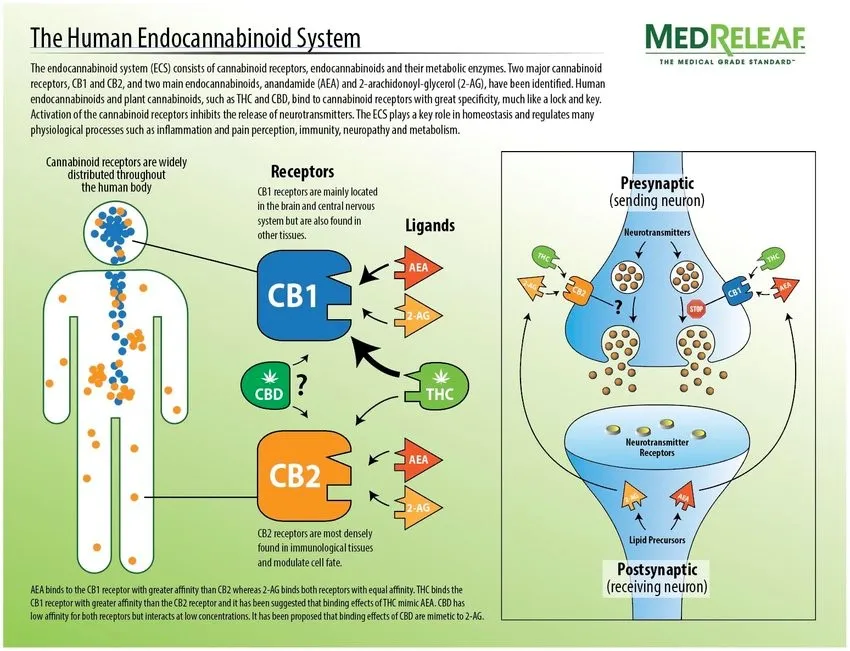
As discussed in this author’s previous posts, arthritis is a progressive degeneration of articular cartilage with eventual joint space narrowing.1 In particular, rheumatoid arthritis (RA) is defined as a chronic autoimmune inflammatory disease characterized by consistent and symmetrical synovitis (inflammation of the synovial membrane) of the knees, feet, wrists, and hands.2
In recent years, and due to legalization in Canada, cannabis and its derivatives have been gaining attention as an alternative to conventional pain medications and traditional drug therapies. As such, the following will explore rheumatoid arthritis in greater detail, as well as research exploring cannabidiol (CBD)/Tetrahydrocannabinol (THC) and their effects upon pain management of said disease.

RA, left unchecked, inexorably produces bone and cartilage damage, irreversible bone deformities, and muscle atrophy.2(40) As the disease progresses, RA may target all joints of the body; a systematic process which slowly degrades individuals’ quality of lives. RA also has direct economic impacts by way of medications, visits, hospitalization, and cost of caregiving which has been estimated to cost each patient $13,500 per year and indirect costs (i.e., early retirement/loss of productivity) of up to $33,000 per year.2(40)
As was discussed in this author’s previous posts, non-steroidal anti-inflammatory (NSAIDs) and paid medications traditionally used to manage ailments such as RA have well-known side effects, which can make them unappealing to some individuals. However, mounting research (and interest from the public) has suggested using cannabis derivatives (THC and CBD) can work together in a synergistic and complimentary fashion.3(50) The following will consider the same in greater detail.

THC is known to induce analgesic (pain-lowering) activity both in neuropathic (damage/disease to somatosensory nervous system) and nociceptive pain (physical damage), while CBD and THC both have anti-inflammatory properties.3(50) Furthermore, CBD was found to block progression of RA, though such findings were limited to rat models.3(50) As a means of better generalizing the effects of said cannabis derivatives on RA in human models, Blake et al3(50) constructed a study exploring the same in greater detail.
The study was a preliminary multicentre, randomized, double-blind, parallel-group comparison of Sativex (mouth spray with cannabis extracts) and a placebo group.3(50)Sativex consisted of a blend of plant extracts which contained 2.7 mg THC and 2.5 mg CBD; ratios and concentrations traditionally used in pain management.3(50) In the following sections, this author will review the study and results in greater detail.

Prior to initiating the study, all RA participants (31 participants in the experimental group and 27 participants in the placebo group) rated their baseline level of pain using a numerical rating score (NRS), and continued do complete an NRS each morning throughout the duration of the study (in both the experimental and placebo groups).3(51) Secondary outcomes were also considered and included NRS measures of pain at rest, morning stiffness, sleep quality, and also included filling out the 28-joint disease activity score (DAS28) and Short-Form McGill Pain Questionnaire (SF-MPQ).3(51)
After the study was completed, results indicated that a significant analgesic effect was observed and disease activity was suppressed; a similar finding observed in the aforementioned rat studies.3(51) Furthermore, sleep quality and duration was also improved in the experimental group when compared to controls. Though the researchers indicated that a more detailed set of studies are required to explore dosages, formulations, and ideal subgroups is required, the above trial remains encouraging and telling of the pain-lowering effects of CBD/THC.
In conclusion, RA is a disease that left unchecked, inexorably produces bone and cartilage damage, irreversible bone deformities, and muscle atrophy. As said disease progresses, RA may target all joints of the body; a systematic process which slowly degrades individuals’ quality of lives. Although traditional pharmaceutical interventions can manage RA-related pain, such drug therapies can have unfavorable side effects. However, emerging research exploring CBD/THC and their analgesic and anti-inflammatory effects upon RA remains encouraging; such botanicals could serve as an adjunct, or replacement, to commonly prescribed NSAIDs and pain medications.
References
1. Yimam M, Lee YC, Wright L, et al. A botanical composition mitigates cartilage degradations and pain sensitivity in osteoarthritis disease model. J Med Food. 2017;20(6):568-576. doi: 10.1089/jmf.2016.0167.
2. Wu W, Yang J, Xie Y, et al. Dose-response relationship between sleep and rheumatoid arthritis. Am J Health Behav. 2020;44(1):40-53. doi:10.1089/jmf.2016.0167.
3. Blake DR, Ho M, Jubb RW, et al. Preliminary assessment of the efficacy, tolerability and safety of a cannabis-based medicine (Sativex) in the treatment of pain caused by rheumatoid arthritis. Rheumatology. 2006;45:50-52. doi:10.1093/rheumatology/kei183.
-Michael McIsaac
